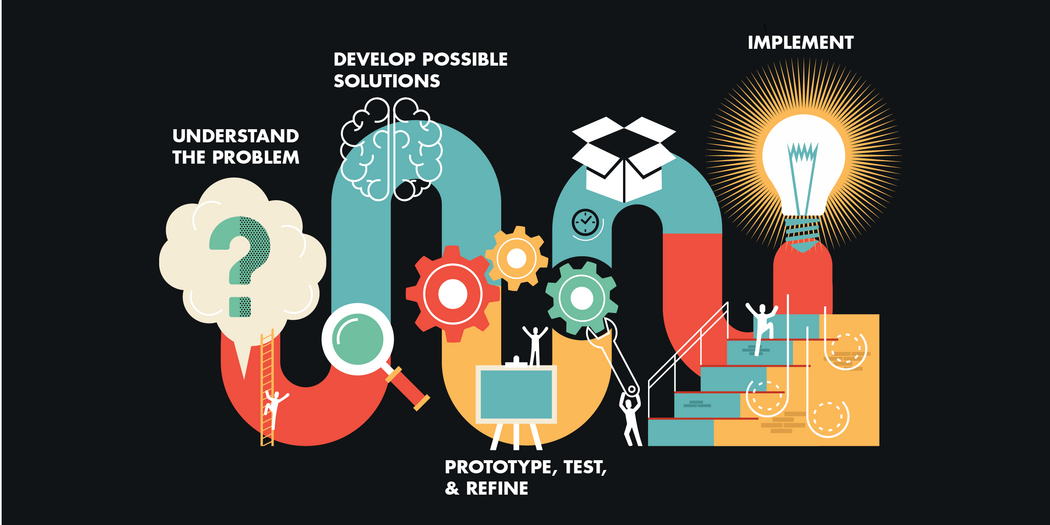In today’s digital age, the proliferation of AI technology poses a significant challenge to academic integrity, particularly in assessments where generative AI can effortlessly produce essays and answers. However, new research from the University of South Australia suggests that educators can effectively mitigate these challenges by integrating Design Thinking into teaching and assessment strategies.
Understanding the Challenge

Image from iStock
Generative AI, such as ChatGPT and Microsoft Copilot, presents a temptation for students seeking quick solutions to academic tasks. With the ability to generate essays with a single click, these technologies raise concerns about the authenticity and integrity of student work. Traditional educational approaches often struggle to adapt to these technological advancements, prompting the need for innovative solutions.
The Role of Design Thinking
Design Thinking is a method that encourages creative problem-solving through empathy, iteration, and experimentation. It empowers children to approach challenges with confidence and resilience, preparing them for a future where adaptability and innovation are essential skills.

Image from MIT Management Sloan School
Design Thinking offers a transformative approach that centres on human-centric and curiosity-driven methodologies. Developed through iterative processes, Design Thinking fosters skills like creativity, critical thinking, and collaboration—attributes that are difficult for AI to replicate. Maria Vieira, a PhD candidate at UniSA, highlights the effectiveness of Design Thinking in addressing integrity issues posed by AI:
“Design Thinking requires students to navigate through phases such as empathy, definition, ideation, prototyping, testing, and evaluation. Each step not only yields specific outcomes but also provides opportunities for feedback and formative assessment.”
Why Design Thinking Matters
In a world increasingly shaped by technology, Design Thinking offers a human-centric approach that complements technical skills. It fosters empathy and critical thinking—qualities that are crucial for navigating complex problems and collaborating effectively with others.
How Design Thinking Empowers Children
Design Thinking isn’t just about finding solutions; it’s about understanding the needs of others and creating meaningful impact. By engaging children in Design Thinking activities, parents can help them develop essential life skills while fostering a mindset of creativity and curiosity.
Practical Implementation
Unlike traditional education models that often focus on finding a single correct answer, Design Thinking encourages students to explore problems without predetermined solutions. This approach challenges them to think critically and innovatively, preparing them for real-world challenges where ambiguity is common.
Throughout the Design Thinking process, students engage in activities such as creating prototypes, developing mind maps, and delivering presentations. These outputs enable educators to assess both individual contributions, such as research evidence and self-reflections, and group dynamics based on collaborative outputs.
Enhancing Learning and Development
Design Thinking’s iterative nature allows students to revisit and refine their work, promoting continuous improvement and resilience in the face of failure. It also cultivates essential skills such as empathy, collaboration, and adaptability—skills crucial for thriving in the 21st-century digital landscape.
Maria Vieira emphasises the broader impact of Design Thinking on educational practices:
“This teaching method empowers students to take ownership of their learning journey, allowing teachers to shift their focus from content delivery to observing and supporting student development. It enables educators to be more responsive to individual learning needs and progress.”
Tips for Parents to Foster Design Thinking at Home
1. Embrace Play-Based Learning

Image from iStock
Design Thinking thrives in environments where children can explore freely and follow their own interests. Encourage play-based activities that stimulate curiosity and problem-solving. Whether it’s building forts, creating art, or inventing games, play provides a natural platform for children to experiment, fail, and learn.
2. Teach Courage and Resilience
Failure is an integral part of learning Design Thinking. Encourage your child to take risks and embrace mistakes as opportunities to learn. Whether they’re mastering a new skill or tackling a difficult puzzle, instilling courage helps them approach challenges with confidence and perseverance.
3. Foster Empathy in Everyday Situations
Empathy is key to understanding others’ perspectives and needs—a cornerstone of Design Thinking. Encourage conversations about feelings and emotions, both theirs and others’. When conflicts arise, guide them to consider how others might feel and brainstorm solutions that benefit everyone involved.
4. Encourage Creative Problem-Solving

Image from iStock
Provide opportunities for your child to engage in open-ended problem-solving activities. Ask questions that prompt them to think creatively, such as how to redesign a favorite toy or solve a household problem together. Celebrate their ideas and encourage them to explore multiple solutions.
5. Support Iterative Learning
Design Thinking involves iterating on ideas based on feedback. Encourage your child to refine their solutions through testing and feedback. Whether it’s building a model, conducting a science experiment, or writing a story, emphasize the importance of revising and improving their work.
As a parent, integrating Design Thinking into daily activities doesn’t have to be complicated. From planning a family outing to solving a household problem, invite your child to brainstorm ideas, prototype solutions, and reflect on what worked and what didn’t. Each experience builds their confidence and strengthens their problem-solving skills.
Promoting Design Thinking at Home: Activities for Every Age
Design Thinking isn’t just for classrooms—it’s a valuable approach that parents can integrate into everyday activities at home to nurture creativity, problem-solving skills, and empathy in their children. Whether you have elementary schoolers bursting with imagination, middle schoolers eager to understand the world around them, or high schoolers ready to tackle real-world challenges, there are practical ways to encourage Design Thinking at every age.
Elementary School
1. Leverage their Imagination
Elementary school children are natural innovators with boundless creativity. Encourage them to redesign everyday items or imagine solutions for future scenarios. For example, let them design a robot pet that solves everyday problems like picking up dog poop!
2. Make a Connection
Young children benefit from activities that relate to their familiar surroundings. Design challenges based on storybooks or playgrounds can spark their imagination and teach them empathy by considering the needs of fictional characters or their peers on the playground.
Middle School
1. Challenge their Imagination
Middle schoolers thrive on challenges that pique their curiosity and engage their peers. Try the Tennis Ball Design Challenge, where students must innovate using only a tennis ball to solve a real-world problem. This activity encourages teamwork and creative problem-solving.
2. Make it Have a Reason
Middle school students appreciate learning with a purpose. Engage them in projects that address real-world issues, such as designing accessible household objects for people with visual impairments. These projects not only build empathy but also demonstrate the practical application of Design Thinking.
High School
1. Reinvigorate their Imagination
High school students may have developed self-perceptions about creativity. Encourage them to explore their creative potential through short exercises that challenge them to think outside the box. Building creative confidence empowers them to tackle complex problems with innovative solutions.
2. Make it Matter
Empower high school students by connecting Design Thinking projects to real-world challenges. Encourage them to design solutions for community partners or participate in global challenges like those offered by openIDEO. These experiences help students see the impact of their ideas and foster a sense of agency in shaping their future.
Takeaway
By incorporating these activities into daily routines, parents can create a nurturing environment where Design Thinking flourishes naturally. Whether through playful exploration or purposeful projects, each activity builds upon children’s innate curiosity and encourages them to approach problems creatively.
Design Thinking isn’t just a skill set—it’s a mindset that equips children with the tools to navigate an increasingly complex world. By promoting creativity, empathy, and problem-solving skills at home, parents lay the foundation for their children to become confident, innovative thinkers who are prepared to make a positive impact on society.
ALSO READ:
Looking for Fun Family Bonding Activities? Why Not Combine the Power of Play and Creative Problem-Solving with LEGO bricks?
A Rain-bowl of Happiness: A Playdate Filled with Joy and Creativity
New Study Shows Playing With Dolls Helps Children Develop Empathy